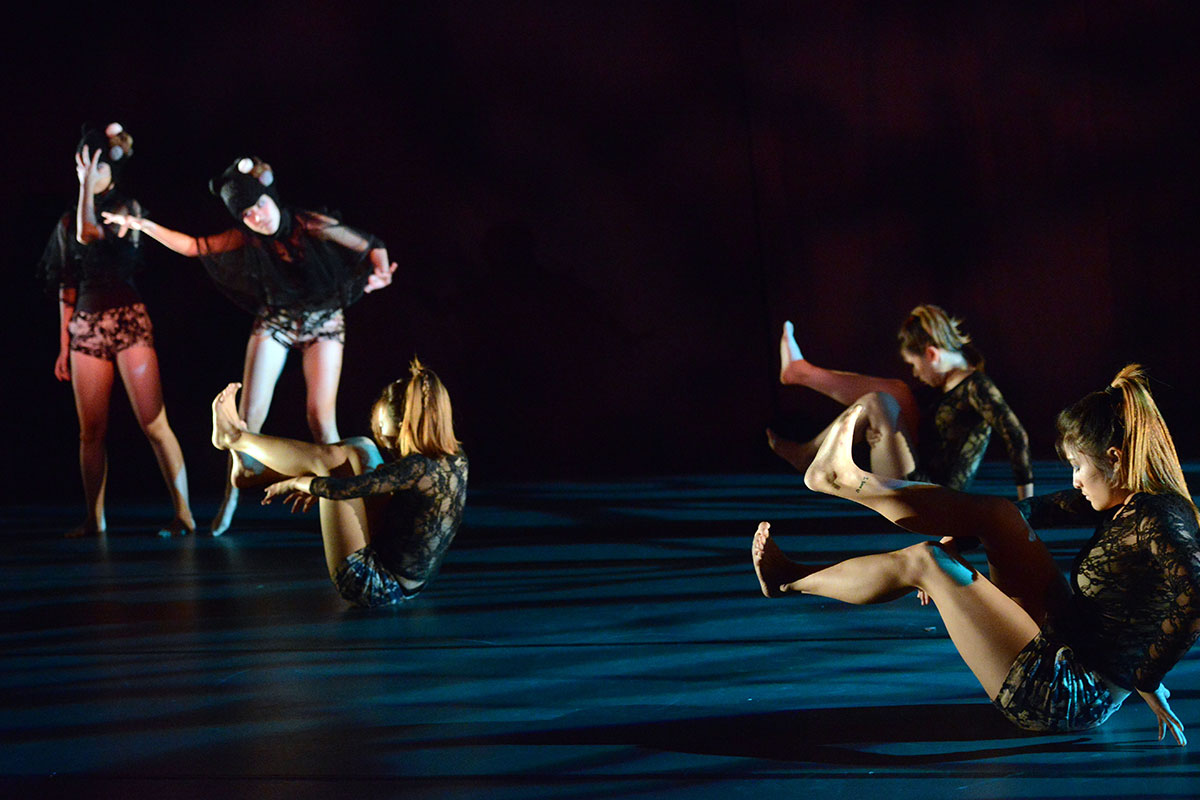Kwang Tung Dance Company member Tan Bee Hung recounts the pieces that were a part of The 9th Kua Bu Series: The Unicorn’s Travelogue.
In 2014, Kwang Tung Dance Company (KTDC) celebrated its 34th year of establishment. Today, the company has 20 dancers—all part-timers and have their own day jobs. In recent years, KTDC has been very keen to promote and nurture young emerging choreographers and dancers with special programs like the We Dance Training Program and Kua Bu. The company provides dance technique classes to aspiring dancers and holds a dance performance every year to provide a platform for them to dance and to grow.
From 21 to 23 November 2014, KTDC held its 9th Kua Bu entitled The Unicorn’s Travelogue at Damansara Performing Arts Centre. Kua Bu means “progress” or “advance” in Chinese, and provides a distinct platform for the dancers to showcase their talents and capabilities. The dancers have to take full responsibility for the overall management and have total artistic direction over the program. Most importantly, works in Kua Bu are all choreographed and performed by the company’s dancers. For this 9th edition of Kua Bu, The Unicorn’s Travelogue, there were six dancers involved in choreography, which was performed by 15 dancers.
The performance started off with “RED” choreographed by Anges Leong. Inspired by a red painting that she saw in an art gallery in Vietnam, a big red cloth was hung on the stage, onto which a dancer’s silhouette was projected as the work opened. The dance continued with more movements and connections between the dancers and the cloth. As the choreographer describes in the program book, the work was really about the struggle that she had faced in her life to be who she is today.
The show continued with Fione Chia’s “Abandoned”. Fione has a soft spot for dolls, and she had seen many dolls abandoned after the owners had grown up, or ended up torn or broken. She wanted to explore the dancers’ possibilities as if the use of some parts of their bodies was taken away. Different tasks and characters were given to her five dancers: some danced as if without their limbs, others with facial distortions (cheekily done with make-up), or they had to stay in a particular position throughout the dance.
The only solo in the Unicorn’s Travelogue was choreographed and performed by Japheth Lim. It was entitled “City in Books” and was set with stacks and stacks of books, with an image of towers and skyscrapers cleverly created by lighting designer Tan Eng Heng on the floor of the stage. The dance was about the choreographer’s inner conflict of living in a bustling city while cherishing a different dream for his life.
“The Corner” kicked off with a series of quick panting and gasping noises. It had a very unique ending, too, with another series of monster-like groaning and an LED-lit toy flying saucer which flew across the stage. Choreographer Lee Choy Wan wanted to recapture a sense of childlike imagination. The work depicted the choreographer’s own private corner to which she would retreat in her mind when she wanted to escape from the world. Playing with all sorts of noises created by the dancers, but still in sync with the brilliant music by Goh Lee Kwang, the dancers moved constantly on the stage with the choreographer’s unique body movements.
“Imperfect” was created by Mak Foong Ming. Using plastic cups with different sizes and functions, the choreographer wanted to stage the journey of a human life, from infancy to old age, using a milk bottle for infants, a champagne glass for adulthood, and so on. This piece probably made more sense to the Chinese-speaking audience, as the words for tragedy (悲剧) and cups (杯具) are homonyms. The latter is the Chinese name for this piece, and is frequently used in informal written Chinese to represent the lighter side of reality. The dancers had to carefully manipulate the cups as well as a rope that held them all together.
The last work was choreographed by me, and entitled Silent Raid. The dance was created in response to the current state of the environment and the humungous amount of plastic bags that human beings are consuming nowadays. The dance started off with dancers filling the stage with loads of plastic bags that were collected during the working process. As the plastic bags could be very slippery, they were a great challenge to dance on. If you are wondering where all the plastic bags went, rest assured that they were sent to a recycling station the moment the production team bumped out.
The production was carefully led by the company’s artistic director, Amy Len, and producer, Samantha Chong. Even though the dancers had total artistic control over the show, both Amy and Samantha were splendid in guiding the choreographers and dancers more deeply into their works. Credit should also be given to the stage manager, Jaslyn Niow. The company has never had a show with so many props before, with all the books, cups and plastic bags, but they were all transported on and off stage very efficiently under her control.
As the 9th Kua Bu marked its end, let’s hope that the 10th Kua Bu is not too far away and hopefully with even more beautiful surprises!
 Tan Bee Hung is a dancer, performer, choreographer and dance instructor based in Kuala Lumpur. More
Tan Bee Hung is a dancer, performer, choreographer and dance instructor based in Kuala Lumpur. More
To contact the author:
![]() ;
;
Featured photo: Angelin Chu and Fione Chia in “Silent Raid” at the Black Box, Damansara Performing Arts Centre, Petaling Jaya, 20 November, 2014. Photo © Dev Lee



